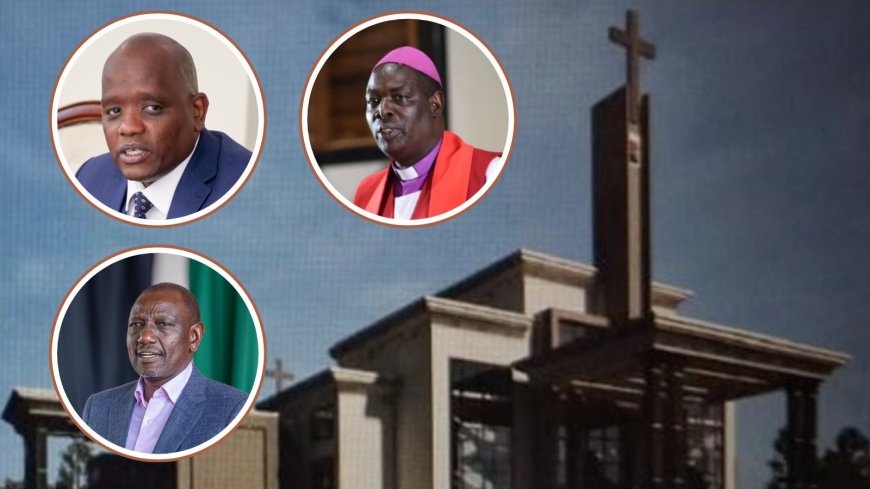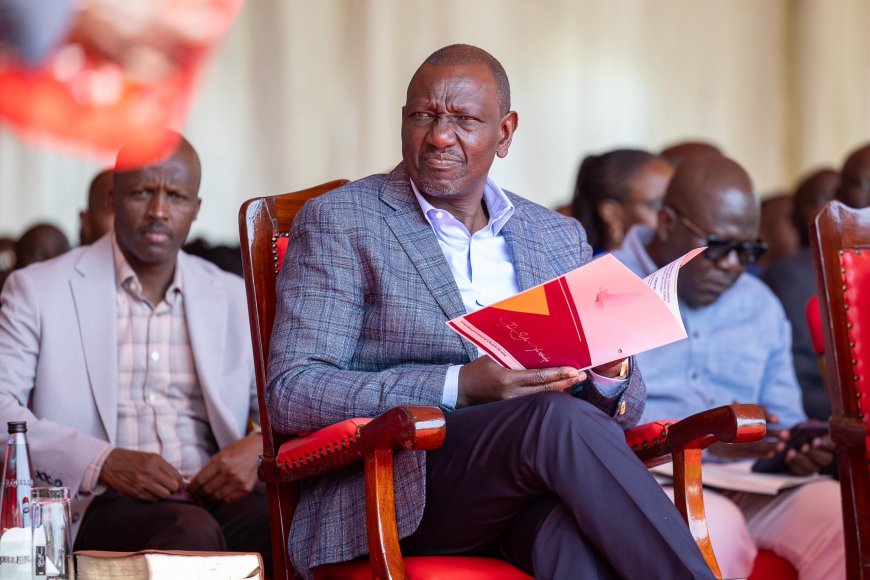Itumbi's Response On Ruto Being Bishop Of Ksh1.2B State House Church
Itumbi said he was surprised by Sapit’s question, outlining the historical ties between the State House, the Church, and Christianity in general.

Dennis Itumbi, who serves as Digital Strategist and Head of Creative Economy at the Office of the President, has addressed Anglican Church of Kenya Archbishop Jackson Ole Sapit’s remarks about who will head the State House church currently being built.
In a lengthy statement on Saturday, July 5, Itumbi said he was surprised by Sapit’s question, outlining the historical ties between State House, the Church, and Christianity in general.
Sapit, on Friday, July 4, had voiced his concerns over the church’s construction, even asking if President William Ruto would take up the role of bishop in the new church.
But Itumbi clarified that, by its intended design, Ole Sapit himself was meant to serve as the bishop of the new State House church and the country’s National Chaplain.

President William Ruto and DP Kithure Kindiki at State House, July 4, 2025 and the proposed church at State House (inset). /PCS.DAILY NATION
"Your Grace, my Archbishop, Most Reverend, Ole Sapit, you don’t need to ask who should be State House Bishop. By TRADITION, GEOGRAPHY, and Divine Proximity—you already are. Of course, the option to do the convenient and popular thing is also available. By design of the state you are The National Chaplain," he stated in part.
In his explanation, Itumbi pointed out that when British colonialists built State House, they intentionally set aside a prime piece of land right next to Gate A, which he called the Archbishopbourne.
According to Itumbi, the plan was for the Archbishop of the Anglican Church to act as the spiritual adviser to the colonial Governor, and later on, to the President of Kenya.
He also mentioned that the State House itself includes a fully equipped 100-seater chapel, designed to hold prayer services and offer spiritual guidance to the Head of State.
Historical records show that during British colonial times, State House — then called Government House — was built to house the colonial Governor, while Archbishopbourne was set up nearby as the Nairobi home of the Anglican Archbishop.
Their close location, along with a chapel whose exact seating capacity isn’t well documented, was part of the colonial strategy to weave Anglicanism into government structures, mirroring the Church of England’s influence across the British Empire.
Itumbi also claimed that because no Anglican has ever been elected President, successive Archbishops have often been reluctant to move beyond their denominational identity and fully take up the National Chaplain role.
"History took its own course. Since no Anglican has ever been elected President, successive Archbishops have often hesitated to shed denominational identity and fully embrace the role of National Chaplain. The opportunity has always been present, but the Church I grew up in has not always stepped into it," he continued.
"President Uhuru Kenyatta once attempted to formalize a similar role, appointing a Catholic priest as State House Chaplain. But the civil service bureaucracy ran the appointee in circles until the process stalled and faded, despite a direct presidential instruction."







